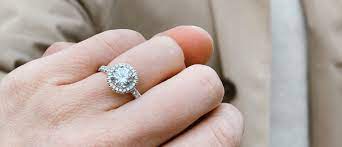Hair Wigs and Extension Market: What are The Types?
The hair wigs and extension market has long been an exclusive secret among the elite and their styling teams

The hair wigs and extension market has long been an exclusive secret among the elite and their styling teams. It provides the incredible versatility to shift from shoulder-length locks in one morning to long and flowing waves by evening. Alternatively, one can change their hair color from platinum to brown or blue in just a few days without any damage.

Even though many people have started to utilize products in the hair wigs and extension market, they can still feel quite daunting to figure out. There is an endless variety of types and installation techniques. The terminology used to categorize the different hair types is vast and often confusing.
The Types
As the hair wigs and extension market size is growing rapidly due to its popularity, it provides more types and selections that you can adjust according to your preferences. There are several grades of hair available. It ranges from synthetic materials to human hair types. There are benefits and drawbacks to using human and synthetic hair. Yet either option can work well depending on our hair type and the desired style.
1. Synthetic hair
Synthetic hair is an excellent choice for beginners looking to try extensions. It is particularly clip-ins for infrequent use. Made from plastic, synthetic hair cannot withstand het styling. But it remains the most budget-friendly option. Most budget-friendly wigs and clip-ins are made from synthetic hair. Even though you might initially think of a cheap wig, it is important to recognize that synthetic extensions and wigs have advanced considerably with quality varying by price.
2. Human hair
Since human hair can differ significantly in origin and quality, it is crucial to understand the terms used for grading it if you are planning to make a purchase by yourself. When discussing high-quality human hair, the phrase you are likely to hear the most is Remy or Cuticle Intact. It signifies that the hair is free from chemical treatments or at its healthiest with all the cuticles all aligned and facing the same way.
Human hair can originate from various regions around the world. India and China are the leading producers. While the hair from these two countries differs significantly, both can be excellent choices based on how well they match the client’s natural hair.
3. Clip-ins
Clip-ins are an excellent choice for anyone wanting to add extra length temporarily. They come in various convenient styles. That includes clip-in bangs and buns. It allows you to transform your look effortlessly. These are perfect for those who want a low-commitment option for extensions. You can use them for a day or for a special event and easily take them out afterward.
4. Sew-in or Weave
A sew-in is one of the traditional types of extensions. That makes it a solid choice for longer-term use. Also known as a weave, this technique involves braiding the natural hair into cornrows before sewing the extensions into place. This method is not suitable for thin hair. It is because the wefts need to be firmly attached to the natural hair. Additionally, this type of extension can be uncomfortable and quite heavy. This potentially leads to stress on the scalp.
5. Tape-ins
Another type in the hair wigs and extension market is the tape-ins. As the name implies, these are affixed using tape or glue. They are aligned with the hair’s roots and adhered to the natural strands. A stylist needs to remove them to minimize potential damage. With proper care, the extensions can be reattached at the roots after being taken out.
What's Your Reaction?




















